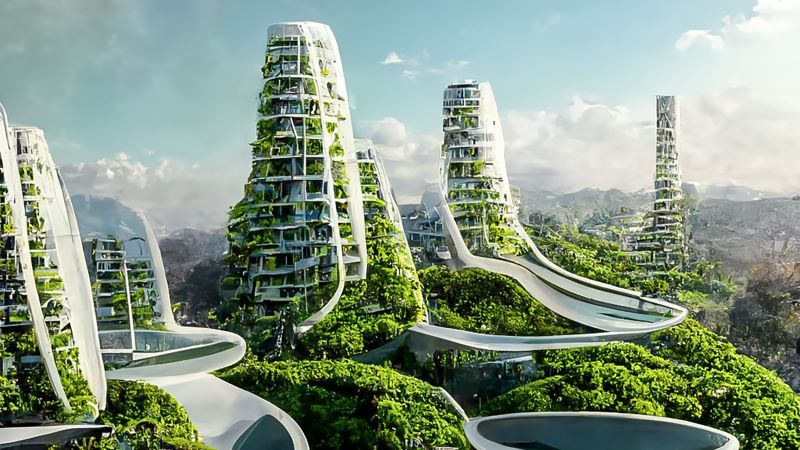
Dearborn, MI — For the first time in seven decades, Ford Motor Company is making a monumental move, relocating its world headquarters to a state-of-the-art product development facility at 20901 Oakwood Blvd. This significant shift, announced by Chairman Bill Ford and CEO Jim Farley, marks a new chapter for the 122-year-old automaker as it invests billions to modernize its enterprise. The move, scheduled to commence in November 2025, is more than just a change of address; it represents a fundamental rethinking of how Ford operates, innovates, and collaborates.
This transformative relocation is anchored within Ford’s refreshed Dearborn campus, designed to bring cross-functional teams together in practice and proximity. The company is ushering in a new way of working, meticulously crafted to foster the next generation of automotive innovation. This strategic decision comes at a pivotal moment, as the automotive industry undergoes a historic transformation driven by electrification, autonomy, and digital services.
By moving its central operations, Ford aims to enhance efficiency, attract top talent, and solidify its position as a global leader. The shift from its iconic “Glass House” to a purpose-built hub underscores a commitment to creating an environment where employees can thrive, collaborate seamlessly, and continue to invent and develop products that lead the industry, ensuring Ford can compete and win across the globe in a new era.

1. **The Historic Headquarters Relocation** Ford Motor Company is preparing for an unprecedented change, relocating its world headquarters for the first time in 70 years. This historic move, announced by Chairman Bill Ford and CEO Jim Farley, will see operations transition to a newly constructed product development facility located at 20901 Oakwood Blvd. The move is set to begin in November 2025, signaling a significant evolution for the venerable automaker.
This relocation involves more than just a physical address change; it represents a strategic consolidation of Ford’s leadership and product development teams. The new building will formally be dedicated as “Ford World Headquarters” upon its opening. The surrounding Dearborn campus will adopt the name “Henry Ford II World Center,” a designation currently associated with Ford’s existing headquarters.
Furthermore, the iconic address, 1 American Road, currently linked to the Glass House, will also transition to the new headquarters. Ted Ryan, Ford’s heritage and brand manager, emphasized the continuity this maintains, stating, “When we move to the new headquarters, the 1 American Road address will move with it, because we’re going to continue to develop products for the next century.” This ensures that a symbolic link to Ford’s enduring legacy is carried forward.
Read more about: Unraveling America’s Automotive Ancestry: A Deep Dive into the Oldest Car Brands That Shaped a Nation’s Roads

2. **The Strategic Imperative: Why Ford is Moving** At the core of Ford’s headquarters relocation lies a compelling strategic imperative: to drive innovation, improve efficiency, and attract and retain top talent. Executive Chairman Bill Ford articulated this vision, stating, “We really want to get the product and the people making product decisions together on a more real-time basis.” The previous headquarters, known as the Glass House, was built in an era less focused on modern collaborative workflows.
Bill Ford candidly described the older facility, noting, “It’s better days are behind it.” He explained that the Glass House was designed “in a time when everybody closed their door and had their private office and there wasn’t this whole notion on teamwork and collaboration, which is what we prefer to have happen.” This outdated design hindered the agile, integrated work styles essential for contemporary product development.
Beyond internal efficiencies, the move is a direct response to the intense competition for skilled professionals. Bill Ford observed, “To attract the best talent you have to give them really interesting problems to work on and you have to give them great places to work.” He acknowledged that while Ford offered interesting work, its older facilities often presented a recruitment challenge. The new, modern headquarters is designed to be a “talent-attraction magnet,” appealing to the tech-savvy individuals increasingly vital to the automotive industry’s transformation.
Read more about: Met Police Seize 72 High-Value Cars in Major London Crackdown on Uninsured Driving and Associated Crime

3. **A Glimpse into the Future: The New Ford World Headquarters by the Numbers** The new Ford World Headquarters is a testament to modern architectural and functional design, boasting impressive statistics that reflect its purpose as a hub for innovation. The facility, which broke ground in December 2020, is scheduled for final completion in 2027, though its grand opening for headquarters operations is set for November 2025. It is a massive undertaking, constructed by contractor Barton Malow.
Spanning an expansive 2.1 million square feet, the four-story building is more than twice the size of the current Glass House headquarters. This increased footprint also allows it to support twice the number of employees, accommodating a significantly larger workforce under one roof. The primary materials used in its construction—glass, steel, concrete, natural stone, and natural wood—underscore its modern aesthetic and functional robustness.
When fully operational, the new headquarters and its surrounding campus are designed to be a highly integrated environment. The plan ensures that 14,000 employees will be within a 15-minute walk, fostering a strong sense of community and facilitating spontaneous interactions that are crucial for collaborative work. This proximity is a cornerstone of Ford’s vision for enhanced efficiency and innovation across its teams.

4. **Architecting Collaboration: Design for Proximity and Teamwork** The design of Ford’s new World Headquarters is fundamentally centered on enabling unprecedented levels of collaboration, efficiency, and innovation. A key aspect is its ability to facilitate the free movement of products, allowing a vehicle to be accommodated almost anywhere within the facility. This is a significant departure from older designs and crucial for real-time product development.
The building features a vertically-stacked layout, a design choice resulting from a two-year study. This innovative configuration dramatically reduces material movement time by more than 80% compared to the previous Product Development Center. For instance, moving a vehicle or product from one end of the Glass House could take about 36 minutes; in the new headquarters, this can be accomplished in just about 3 minutes due to vertical integration, as stated by Jim Dobleske, CEO of Ford Land.
Workspaces are intentionally distributed throughout the building, accessible to all employees regardless of their assigned office. This flexibility is designed to enable seamless collaboration across the entire Dearborn campus. Bill Ford highlighted the practical benefits, noting that the ability for design studio teams, engineers, and executives to meet on 5 minutes’ notice will eliminate wasted time, saving hours previously spent commuting between disparate buildings and searching for parking.

5. **Revolutionizing Product Creation: Advanced Design Studios and Review Spaces** Central to the mission of fostering next-generation automotive innovation, the new Ford World Headquarters is equipped with cutting-edge facilities specifically designed for product creation and review. The building features six dedicated Design Studios, each engineered to allow for confidential reviews in both indoor and outdoor settings. This flexibility supports various stages of design and evaluation processes.
Perhaps one of the most significant advancements is the Design Showroom, which for the first time, enables Ford to conduct a full product review in one unified space. This state-of-the-art showroom is outfitted with 10 turntables, advanced lighting systems, and a zero-degree pitched floor that extends directly to an outdoor courtyard review space. Additionally, a massive 64-foot micro-LED screen allows for detailed comparison of digital and full-size physical vehicles, streamlining the review process.
The entire facility is designed to accommodate vehicles with ease, featuring 26 vehicle turntables strategically placed throughout the building for product display and review. This comprehensive integration of design and review capabilities within a single facility is aimed at empowering Ford to invent, design, and develop products that are truly industry-leading, reinforcing its capacity to compete and win in a rapidly evolving global market.

6. **Employee-Centric Design: Amenities for Well-being and Flexible Work** The new Ford World Headquarters places a strong emphasis on employee well-being and flexible work arrangements, reflecting a modern understanding of a productive work environment. The building boasts a sprawling 160,000-square-foot food hall, accessible to all Ford employees. This is not merely a cafeteria but a vibrant space featuring seven food and beverage pavilions, designed by Executive Chef Grant Vella, intended to serve as a “third space” for the entire Ford community, blending dining with collaboration.
Beyond dining, the headquarters integrates a wide array of amenities aimed at supporting a diverse workforce. These include dedicated wellness rooms, kitchenettes, and mothers’ rooms, recognizing the varied needs of employees. For seamless communication and teamwork, there are 303 tech-enabled meeting rooms, designed to facilitate collaboration with global teams efficiently.
Further enhancing the employee experience is the extensive integration of outdoor spaces. The building features more than 100,000 square feet of interior courtyard space, accessible to all employees throughout the workday. This is complemented by 12 acres of greenspace, which more than doubles the existing tree canopy on the campus, creating a walkable and inviting environment between facilities. Jennifer Kolstad, Ford’s global design director, highlighted the “wellness priorities” embedded in the design, such as ample light and direct access to outdoor courtyards, encouraging employees to take “moments of repose” and work in different ways, including beautifully designed outdoor pavilions for meetings.

7. **Building Sustainably: Environmental Goals and Eco-Conscious Design** Ford’s new World Headquarters embodies a robust commitment to environmental responsibility, integrating leading sustainability practices into its very core. The building’s design was significantly informed by WELL building standards, a framework focused on enhancing human health and well-being through design. Ford developed specific sustainability goals tailored to the building’s unique programming, climate, and site, ensuring a holistic approach to environmental stewardship.
One of the most ambitious sustainability targets is the building’s projected energy consumption. It is designed to use approximately 50% less energy than Ford’s previous product development center, representing a substantial reduction in operational impact. This efficiency is further bolstered by the goal for the new headquarters to function as a Net-Zero Energy Building, powered by 100% renewable electricity sourced from the campus’s Central Energy Plant.
Waste reduction is another key pillar of the sustainability strategy. The facility has set an ambitious goal that 95% of all its disposable items will be compostable, recyclable, or reusable. Jennifer Kolstad, Ford’s global design director, emphasized that “The building is not just a building… This is a tool that we’ve been dreaming about that will bring cultural and behavioral change because it’s been designed that way.” This forward-thinking design positions the new headquarters as a model for corporate responsibility and environmental innovation.

8. **The End of an Era: The Legacy of ‘The Glass House’**Ford’s current world headquarters, affectionately known as ‘The Glass House,’ has been an iconic fixture since its opening in 1956. This 12-story building, situated at 1 American Road, was designed by Skidmore, Owings and Merrill in the International Style and was, at the time, one of the nation’s largest office buildings occupied by a single company. Its construction was championed by Henry Ford II, who sought to move the company’s administration from its then-obsolete building near the River Rouge factory to a more serene setting in Dearborn farmlands.
For nearly seven decades, ‘The Glass House’ served as a hub of innovation, inspiring generations of Ford employees and birthing a long lineage of incredible products, from the Mustang to the F-Series trucks. However, as Executive Chairman Bill Ford noted, “It’s better days are behind it.” The building’s original design, characterized by private offices and closed doors, proved ill-suited for the modern collaborative workflows that Ford now prioritizes.
Bill Ford also shared an emotional connection to the building, having spent nearly 50 years working there, recalling both positive experiences and tense meetings during challenging times like the Great Recession. He felt ‘cut off’ in the Glass House, disconnected from the ‘action’ of product development. This personal sentiment underscores the strategic imperative to move towards a more integrated and dynamic workspace.
While its legacy is undeniable, ‘The Glass House’ will soon be sustainably decommissioned. Ford plans to complete its move out of the building in the first half of 2026, with demolition expected to commence in 2027 and conclude by the end of 2027 or mid-2028. This comprehensive process, spanning roughly 18 months, signifies a definitive end to an era for Ford’s long-standing headquarters.
Read more about: Beyond the Asphalt: Unveiling 10 Legendary American Cars Too Valuable for the Open Road

9. **Sustainable Decommissioning and Community Repurposing**Following the relocation of its headquarters, Ford Motor Company has outlined extensive plans for the sustainable decommissioning and repurposing of ‘The Glass House’ site. This initiative reflects Ford’s commitment to both environmental responsibility and its deep roots within the Dearborn community. The existing 950,000-square-foot building, along with the adjacent Ford Credit building, will undergo a sustainable demolition process.
Ford will retain ownership of the 212-acre property, ensuring its continued importance in the company’s story within Dearborn and Southeast Michigan for many years to come. The decision to demolish the building rather than renovate was made after concluding that its continuation was not financially sustainable, particularly given its outdated design for modern work practices.
Crucially, Ford is actively collaborating with the City of Dearborn and local community leaders to determine the best use for the site. The primary vision is to transform the area into a valuable asset for the local community, with preliminary discussions pointing towards a ‘park-like environment.’ This could include the creation of sports fields or other public amenities.
Demolition of ‘The Glass House’ and related structures will open approximately 100 acres of the site for public use. While the iconic headquarters building will be removed, Ford will continue to operate two other buildings located on the property: the Service Research Center garage and the data center behind the current world headquarters. These efforts highlight Ford’s dedication to creating lasting community benefit from its historic land.

10. **Global Connectivity and Real-Time Decisions**Ford’s relocation to its new world headquarters is fundamentally driven by a desire to enhance global connectivity and facilitate real-time decision-making across its enterprise. Executive Chairman Bill Ford emphasized this critical need, stating, “We really want to get the product and the people making product decisions together on a more real-time basis.” This sentiment underscores a strategic shift towards agile, integrated workflows.
The new facility is meticulously designed to foster an environment where corporate leadership, design teams, and engineers are in close proximity. This co-location is expected to significantly improve efficiency by eliminating the wasted time previously spent commuting between disparate buildings and searching for parking. Bill Ford noted that teams can now meet on “5 minutes’ notice” if needed, a stark contrast to the hours that could be lost in the old setup.
To support seamless collaboration with global teams, the new headquarters is outfitted with 303 tech-enabled meeting rooms. These state-of-the-art spaces are engineered to facilitate efficient communication and teamwork, ensuring that geographical distances do not impede decision-making or product development cycles. The building’s layout, where 14,000 employees will be within a 15-minute walk, naturally encourages spontaneous interactions vital for innovation.
While the move strongly emphasizes increased onsite collaboration, Ford has not committed to any future shift regarding its return-to-office policy. Currently, the company maintains a global work arrangement policy mandating four days a week onsite for hybrid employees. The focus remains on maximizing the benefits of the new, highly collaborative physical environment within the existing policy framework, promoting efficiency and innovation through enhanced connectivity.
Read more about: The Vanishing Act: 12 Car Features Automakers Are Quietly Removing and What Every Buyer Needs to Know Before Signing

11. **The Visionary Architects of Change: Leadership Behind the Move**Ford’s monumental headquarters relocation is the culmination of decades of discussion and the decisive leadership of key executives. While the idea of a new headquarters had been discussed for at least 30 years, such expenditures were consistently put on hold during industry downturns, leading to increasingly outdated facilities. Executive Chairman Bill Ford admitted that when recruiting, “We’d have to show them everything but where they were going to work. It was really bad.”
Bill Ford’s personal experience of feeling “cut off” at ‘The Glass House’ further fueled the imperative for change. He drew inspiration from modern campuses like Apple’s headquarters, recognizing that a truly great workplace is essential for attracting and retaining top talent in today’s competitive environment. “To attract the best talent you have to give them really interesting problems to work on and you have to give them great places to work,” he articulated.
The pivotal moment for the project’s transformation came in 2017 with the leadership of former CEO Jim Hackett. Bill Ford credits Hackett, who had previously been CEO of Steelcase office furniture, with the courage to push the vision forward. “I give Jim Hackett a lot of credit,” Bill Ford stated, “because he gets criticism for many things, but I give him a lot of credit for Jim saying to me, ‘Look, I’m not going to be the CEO here forever, I can take the heat and I’ll make this decision to really revitalize a lot of our buildings, and particularly the Product Development Center.'”
Hackett’s background in office furniture provided unique insights into modern workspace design, allowing him to spearhead the new direction with a different architecture firm, Norway-based Snøhetta. What began as a plan to redevelop the Product Development Center ultimately morphed into the decision to make it the new world headquarters, bringing executives and product development teams together. This bold leadership, combined with Bill Ford’s long-term vision, catalyzed the transformation.

12. **Hidden Details and Artistic Integration: The Architectural ‘Easter Eggs’**Beyond its functional design for collaboration and innovation, Ford’s new World Headquarters is infused with thoughtful artistic integration and unique architectural details, what Global Design Director Jennifer Kolstad affectionately calls “architectural ‘easter eggs.'” Kolstad emphasizes that the building is not merely a structure but “a tool that we’ve been dreaming about that will bring cultural and behavioral change because it’s been designed that way.” This philosophy is evident in every detail.
One such hidden detail can be found on the exterior glass facade of the building. Upon close inspection, observers will discover a pattern across the facade that incorporates digits. These digits are not random; they represent “significant patent numbers in our history hiding in the facade,” a subtle yet powerful nod to Ford’s rich legacy of innovation and engineering ingenuity. This thoughtful touch connects the company’s past achievements with its future aspirations.
Furthermore, the interior spaces of the new headquarters consciously combine archival materials, showcasing items that many employees may have never seen before. These historical artifacts are thoughtfully integrated with contemporary artwork, much of which has been built or designed from actual vehicle parts or materials used in Ford’s design and manufacturing processes. This approach creates a dynamic environment that honors the company’s heritage while inspiring future creativity.
The design also places a strong emphasis on employee wellness, incorporating features like ample natural light and direct access to outdoor courtyards. Jennifer Kolstad described these “wellness priorities” as allowing employees “moments of repose” and encouraging them to work in diverse ways, including beautifully designed outdoor pavilions for meetings. This holistic design ensures that every element, from the grand architectural gesture to the smallest detail, contributes to a stimulating and supportive work environment, akin to modern upgrades seen in other automotive giants like General Motors’ Technical Center.

13. **A Return to Historic Ground: The Site’s Deep Automotive Roots**The choice of location for Ford’s new World Headquarters is deeply significant, as it marks a return to historic ground with profound automotive roots. The state-of-the-art facility is situated on the very site of the former Ford Product Development Center, which originally opened its doors in 1953. This location is not just a parcel of land; it is a crucible of automotive history, where some of America’s most iconic vehicles first took shape.
Indeed, this storied site and the broader Dearborn Campus have been the birthplace of legendary models that have defined generations of motoring. The Mustang, the Thunderbird, the Continental, the ubiquitous F-Series trucks, the Ranger, and the high-performance Ford GT are just a few of the celebrated vehicles that trace their origins to this very ground. This continuity provides a powerful link between Ford’s celebrated past and its ambitious future.
The historical resonance extends further back in time; when the original Product Development Center campus was dedicated in 1953, the celebration was momentous enough to feature U.S. President Dwight Eisenhower, who joined the event live through one of the first-ever uses of closed-circuit television. This deep historical context ensures that the new headquarters is not merely a modern building but a continuation of a legacy of groundbreaking innovation.
In a symbolic gesture that reinforces this connection, the iconic address, 1 American Road, which has long been associated with ‘The Glass House,’ will transition to the new headquarters. Ted Ryan, Ford’s heritage and brand manager, underscored this continuity, stating, “When we move to the new headquarters, the 1 American Road address will move with it, because we’re going to continue to develop products for the next century.” This ensures that a crucial link to Ford’s enduring heritage is carried forward, firmly anchoring the company’s future in its rich past.

14. **Beyond Dearborn: Ford’s Relocation in an Industry Context**Ford’s decision to relocate its headquarters is not an isolated event but rather part of a broader trend sweeping across the automotive industry, where major players are reevaluating and transforming their corporate spaces. This phenomenon extends beyond Dearborn, with companies like General Motors also making significant moves. GM is relocating its headquarters from its iconic Renaissance Center along the Detroit River to a new office building in downtown Detroit, signaling a similar strategic imperative.
This industry-wide reevaluation is driven by several factors, including the need to adapt to a rapidly transforming automotive landscape characterized by electrification, autonomy, and digital services. Companies are acutely aware of the intense competition from global innovators, including formidable Chinese automakers producing affordable, advanced internet-connected electric vehicles, as well as tech firms from Silicon Valley. Obsolete or inefficient corporate environments can hinder competitiveness.
Michigan State University professor of employment relations, Peter Berg, articulated a key insight into this trend: “It’s always interesting, the question of ‘Can we be a new company in the old space we have?’ Of course you can. But whether they feel the need to rebrand themselves in a brand new space, it’s easier to show we are different when we look different.” This highlights the psychological and branding advantages of a modern, purpose-built headquarters.
New, contemporary spaces are also powerful tools for talent attraction and retention. As Berg noted, “People like to work in shiny new spaces.” These facilities help automakers shed the image of a “stodgy, old auto company” and instead present themselves as dynamic, forward-thinking enterprises. By offering inspiring places for collaboration and showcasing a commitment to exciting new products, companies like Ford can better appeal to the tech-savvy talent essential for the industry’s future, ensuring they remain leaders in a global market.
Ford’s multi-billion dollar investment in its new headquarters and the broader Dearborn campus, including the significant renovation of Michigan Central Station, underscores a comprehensive strategy to not only modernize its operations but also to reaffirm its commitment to innovation and community engagement in this new era of mobility. The company’s move represents a bold step forward, fusing its profound legacy with an ambitious vision for the future, ensuring it continues to drive progress and shape the automotive world for decades to come.



